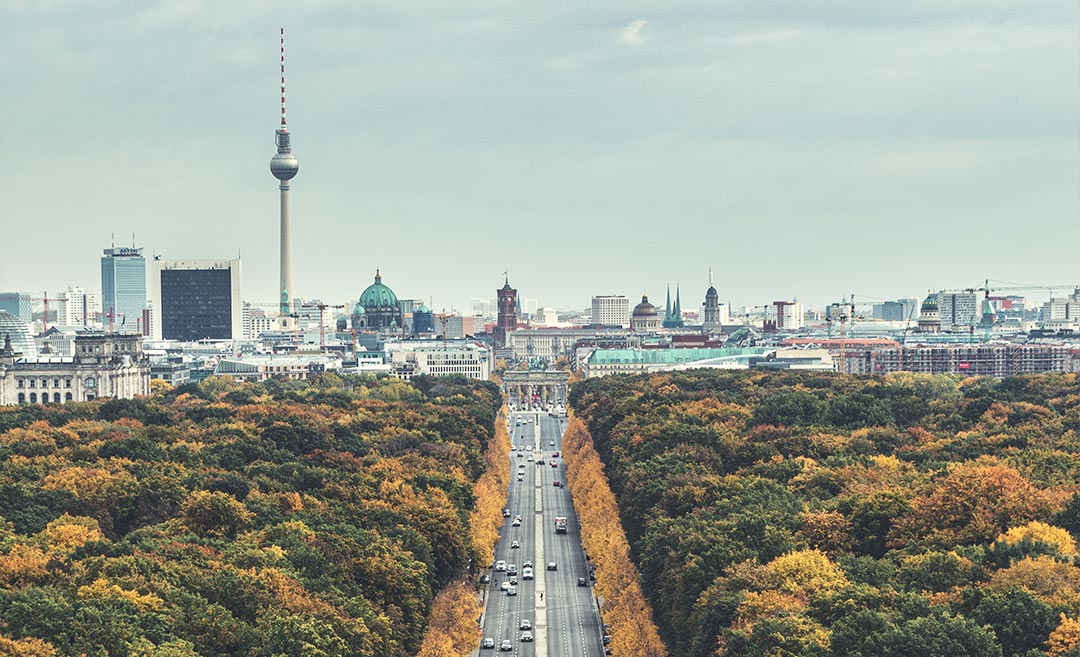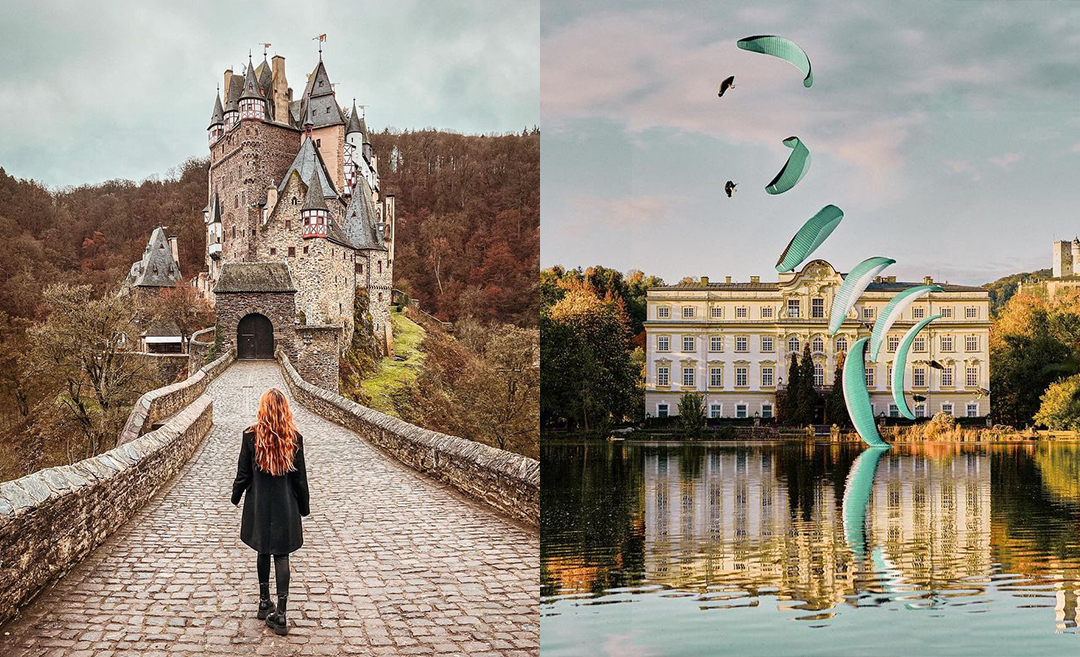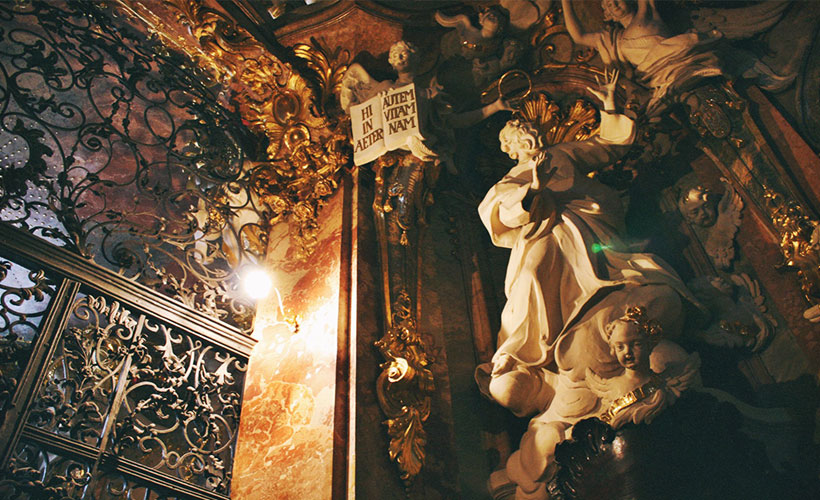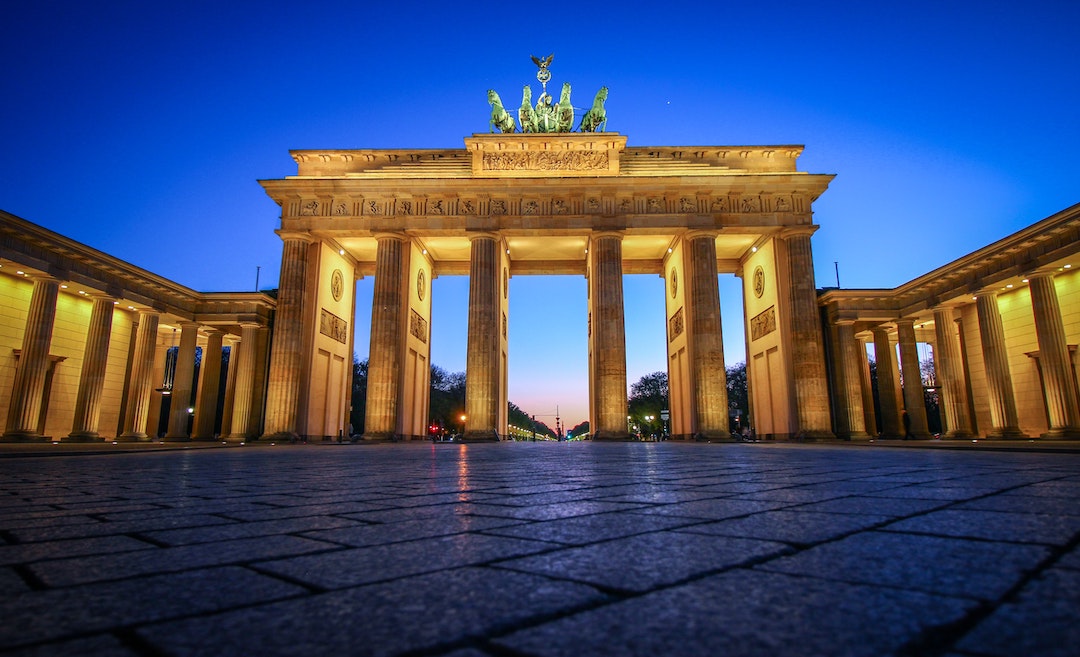A trip to Germany takes you from chic cities to half-timbered villages, fairytale castles to underground clubs, soul-stirring architecture to exuberant festivals, high-brow opera to bratwurst and beer (lots and lots of beer.) Indeed, the country is a kaleidoscope of tastes, treats, and terrific possibilities. And the best thing about it is it’s one of the safest places for solo female globetrotters.
Here are the best places to visit in Germany on your next holiday. Especially if you’re a female travelling solo and on a tight budget. Germany’s a great way to immerse yourself in rich European history without necessarily breaking the bank.
1. Munich
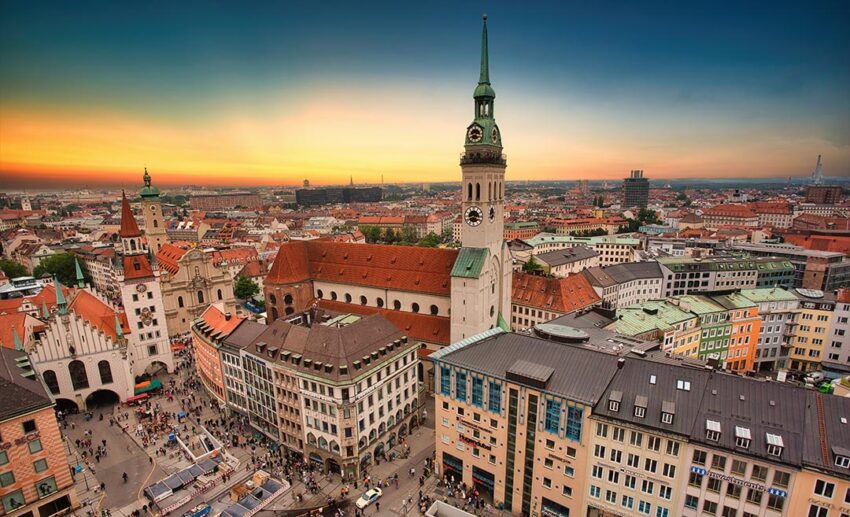
The traditional and the trendy sit side by side in this Bavarian capital. Munich takes pride in its past, with its exquisite churches, Renaissance palaces, and the 200-year-old custom Oktoberfest. But it also celebrates the contemporary with its high-end boutiques, edgy art museums, and streets full of sleek BMWs.
Much of Munich’s beginnings evolved around Marienplatz, the bustling main square, which dates back to 1158. Elegant buildings surround the city centre, but none are as recognisable as the Old Town Hall on the east and the New Town Hall on the north. Another attraction here is the iconic Rathaus-Glockenspiel, a gigantic mechanical clock with life-size characters that re-enacts scenes from Munich’s history.
Munich is a delight to explore on foot, and you can’t miss the imposing churches — think Peterskirche, Frauenkirche, Theatinerkirche, and Michaelskirche — while strolling around the city. Head to Englischer Garten (English Garden), the world’s largest urban public park, for a relaxing afternoon. Visit the Bayerisches Nationalmuseum to see exotic works of art or marvel at the technology-packed showrooms of the BMW Welt.
2. Cologne
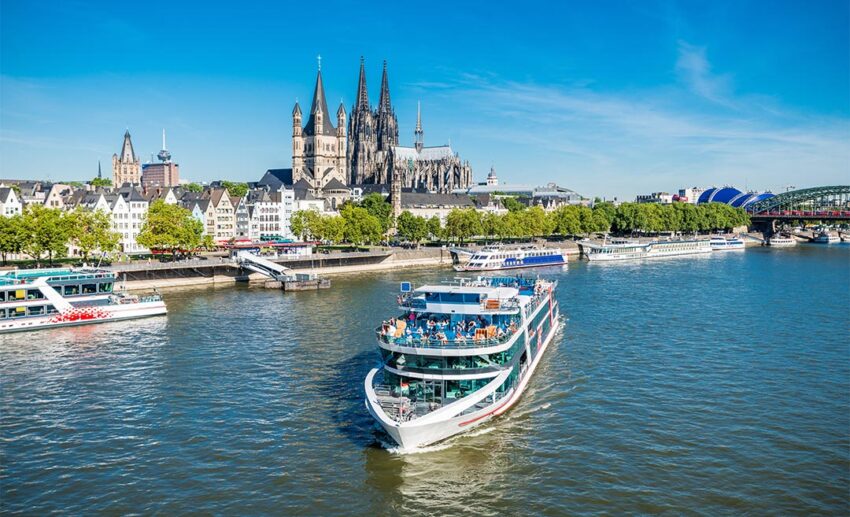
With its intriguing history, awe-inspiring architecture, and joie de vivre culture, Cologne offers an astounding assortment of attractions.
The Cologne Cathedral, with its 157-metre-tall twin towers and majestic interior, is the most imposing landmark in the city. If this masterpiece doesn’t impress you, Cologne has 11 other Romanesque churches, including the 12th century St Gereon’s Basilica, famous for its mosaics, murals, and medieval relics.
Cologne has plenty of museums that suit everyone’s taste and fancy, including the Cologne Chocolate Museum, where you can make your own chocolate bar.
The Wallraf–Richartz Museum houses works of Monet, Van Gogh, Rembrandt, and other artists from the Middle Ages to the 20th century. The Museum Ludwig has a fascinating collection of modern art. The Roman-Germanic Museum showcases Cologne’s archaeological heritage, while the NS Documentation Centre offers insights into the horrors of the fallen Nazi regime.
You can also ramble around the Old Town, unwind on the tree-shaded lawn of the Flora and Botanical Garden, go on a Rhine River cruise, and admire the incredible city views from a cable car.
3. Berlin
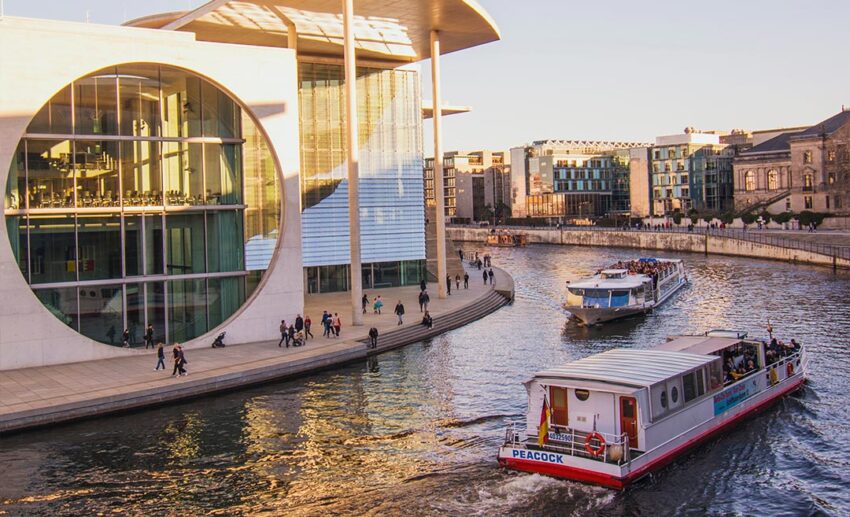
No German travel bucket list would be complete without Berlin on the itinerary. Like Germany’s major cities, the capital has historical landmarks, fantastic architecture, dynamic culture, and a fabulous food scene. The only difference is everything seems larger in Berlin.
Berlin, being Germany’s cultural and artistic heart, is home to an excess of 170 museums and roughly 300 art galleries. It’s impossible to see all of them without spending at least a year in the city. If you must pick only one, make it the Museum Island, a UNESCO Heritage Site that houses five grand museums displaying 6000 years worth of art, architecture, artefacts and more from Europe and beyond.
For something eye-opening, heart-rending, and thought-provoking, explore The Topography of Terror, which documents the dread and persecutions of the Nazi and Soviet eras. Complete your tour with a trip to the Jewish Museum, the Berlin Wall Memorial, and the historic Brandenburg Gate.
Get your daily dose of architecture on a visit to the Schloss Charlottenburg, the former summer retreat of the Hohenzollern clan who once ruled the region, before heading to the Reichstag to walk around its iconic glass dome.
Ramble along Kurfürstendamm, Berlin’s bustling shopping strip, walk down the scenic paths of Tiergarten, and sample street food at Markthalle Neun. After sundown, party at one of Berlin’s edgy clubs.
Airfare to Berlin can sometimes be expensive. The good news is you can find great discounted flights for students, which helps keep costs down.
4. Nuremberg
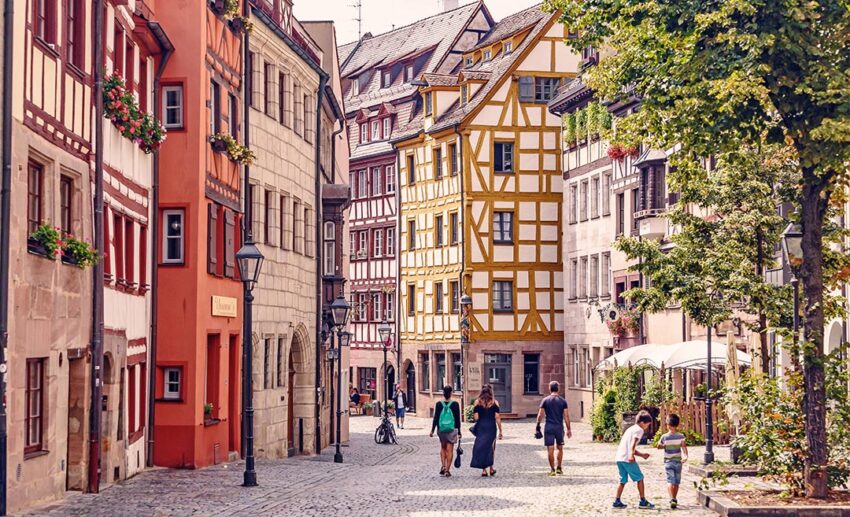
Modern-day Nuremberg is known for its half-timbered houses, spectacular Christmas markets, Instagrammable showstopping architecture and intense nightlife.
The Imperial Castle, a 12th-century fortress perched on a sandstone hill, dominates the Nuremberg skyscape. The picturesque Altstadt (Old Town), with its medieval structures, lively squares, and old churches along cobbled streets, is another famous landmark. Surrounding the old town is a five-kilometre wall dotted with watchtowers where you can enjoy scenic vistas of the city.
The pretty Pegnitz riverside is perfect for a serene stroll. But for somewhere livelier, head to Hauptmarkt in the town square. Shop around, then take a snap of the Schöner Brunne, the 14th-century Gothic-style fountain that stands 19 metres high.
It’s impossible to visit Nuremberg and not see its museums. The Germanisches Nationalmuseum, Transport Museum, and the Tucherschloss Museum are some of the most popular. Other museums, however, tell of a much darker story. The Documentation Center Nazi Party Rally Grounds are stark reminders of Nuremberg’s dreadful past during Nazi Germany. Abandoned structures, including the unfinished Congress Hall and the Zeppelinfeld Grandstand, still stand here.
Be sure to also check out the Memorium Nuremberg Trials. The exhibit details the criminal proceedings of 21 officers tried for their war crimes. You will find the memorial on the top floor of the Palace of Justice, in Courtroom 600, where the trials happened.
5. Frankfurt
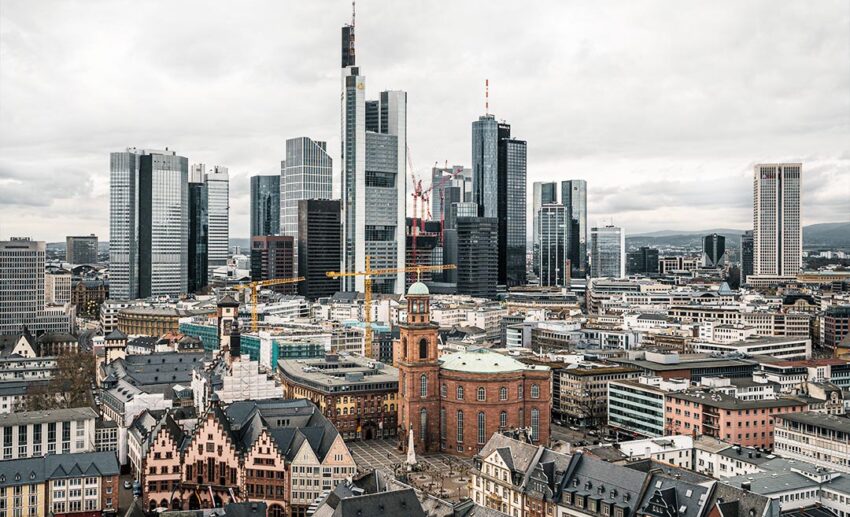
A global city to the core, Frankfurt (officially Frankfurt am Main) is the largest financial hub in Europe, the home base of the European Central Bank, the Frankfurt Stock Exchange, and several other big-time commercial banks. The city’s skyscraper-bedecked skyline is a testament to its financial distinction, often earning it the nickname Bankfurt and Mainhattan (a portmanteau of Manhattan and the local river Man.)
Yet don’t assume Frankfurt is nothing more but a concrete jungle of financial high-rise buildings. The charming 15th century public square of Römerberg, in the heart of the city’s old town, is known for its medieval townhouses, old churches, fantastic fountains, and fairs. During the holidays, it is the venue of a vibrant Christmas market.
There are parks in the city for those looking to escape the urban bustle. Frankfurt City Forest offers lovely hiking and cycling trails, Palmengarten has thousands of plant species from around the globe, and Grüneburgpark is perfect for picnics.
Visiting museums is one of the best ways to experience the other side of Frankfurt. The Museumsufer district (Museum Embankment) has 39 museums, including the historic Städel. Also, check out the Goethe House and Museum, the Naturmuseum Senckenberg, and the Museum of Modern Art.
Finally, be sure to explore Berger Straße, Hauptwache, and the old district Sachsenhausen to delve deeper into the local culture.

